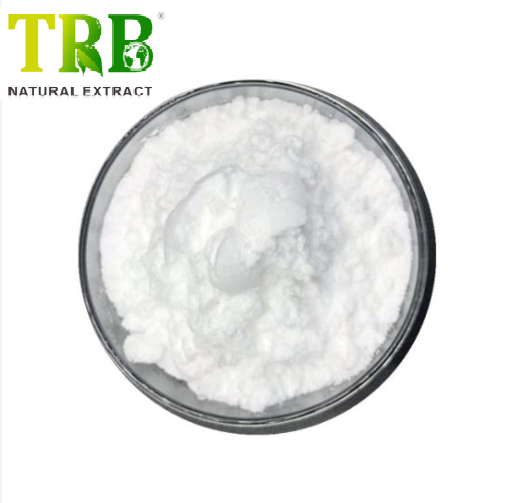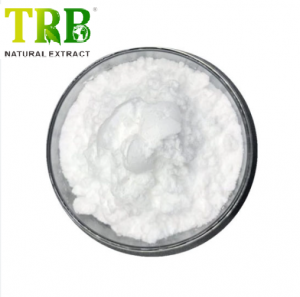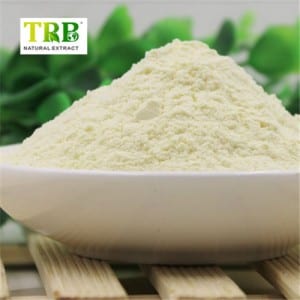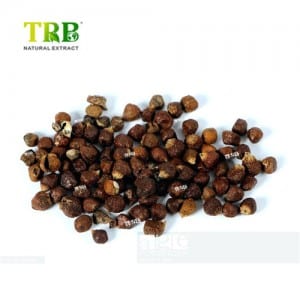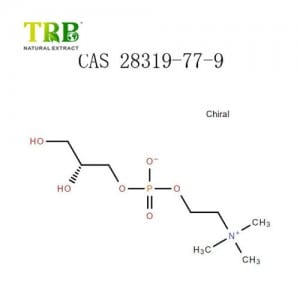Sticking to the perception of “Creating products of top of the range and earning mates with people today from all over the world”, we constantly put the desire of consumers in the first place for Nootropics 99% Purity Pure Powder Citicoline CAS 33818-15-4, Our workforce members are intention to provides products and solutions with large performance cost ratio to our shoppers, as well as the goal for all of us would be to satisfy our consumers from everywhere in the globe.
Sticking to the perception of “Creating products of top of the range and earning mates with people today from all over the world”, we constantly put the desire of consumers in the first place for China Citicoline and Citicoline Powder, Our company has already had a lot of top factories and experienced technology teams in China, offering the best products, techniques and services to worldwide customers. Honesty is our principle, qualified operation is our work, service is our goal, and customers’ satisfaction is our future!
| CAS Number: | 33818-15-4 |
| Molecular formula: | C14H25N4NaO11P2 |
| Molecular weight: | 510.31 |
| Synonyms: | citicoline sodium; Cytidine 5′-diphosphocholine sodium salt; CDP-choline sodium salt |
| Appearance: | Fine Crystal Powder |
| Color: | White to Off white |
| Specification: | 99% |
What is Citicoline?
Citicoline (CDP-choline or cytidine 5′-diphosphocholine) is an endogenous nootropic compound that occurs in the body naturally. It is a critical intermediate in synthesizing phospholipids in the cell membrane. Citicoline plays several significant roles in human physiology, such as improvement of structural integrity and signal conduction for cell membranes, and synthesis of phosphatidylcholine and acetylcholine.

Citicoline is commonly referred to as a “brain nutrient.” It is taken orally and converts to choline and cytidine, the latter of which turns into uridine in the body. Both of them protect brain health and help promote learning behaviors.
As a medicine, it is given through your IV or by injection.
Originally, citicoline was developed for stroke in Japan. It was used as a medicament in European later.
Citicoline vs. Citicoline sodium
Chemically speaking, citicoline and citicoline are different ingredients, although they share similar structures and properties.

Below are the key points to compare:
| Product Name: | Citicoline | Citicoline sodium |
| CAS Number: | 987-78-0 | 33818-15-4 |
| Molecular formula: | C14H27N4O11P2+ | C14H25N4NaO11P2 |
| Molecular weight: | 489.332 | 510.31 |
| Synonyms: | cytidine diphosphate-choline (CDP-Choline) or cytidine 5′-diphosphocholine | citicoline sodium; Cytidine 5′-diphosphocholine sodium salt; CDP-choline sodium salt |
| Appearance: | Fine Crystal Powder | Fine Crystal Powder |
| Color: | White to Off white | White to Off white |
| Specification: | 99% | 99% |
| Packing: | Pack in paper drums and two plastic bags inside. 25kg/drum | |
Citicoline and Citicoline sodium are both brain supplements with a broad spectrum of therapeutic index, as a neuroprotectant or cerebroprotectant. However, citicoline sodium is more stable and accessible to store in the body.
Citicoline vs. Choline
Citicoline is metabolized in the liver and gut wall and then hydrolyzed into two major metabolites: cytidine and choline. Therefore, citicoline is one of the crucial sources of choline.
Both of them support cell signaling, acetylcholine production, and phospholipid metabolism. Nevertheless, citicoline is also a vital source of cytidine. Cytidine enters the systemic circulation, and it will be further metabolized into uridine, which is easier to cross the blood-brain barrier.
In terms of safety, choline is a low toxicity index substance. Compared with choline, the toxicity index of choline with cytidine is 20 times smaller.
How does Citicoline work?

Maintains neuronal cells integrity
Phospholipids are the essential compositions of cell membranes, which is necessary for the growth and repair of cells. Citicoline is a precursor for the synthesis of phospholipids (including phosphatidylcholine, phosphatidylserine, and phosphatidyl-ethanolamine). As cell membranes have a very high turnover rate, these phospholipids must be continuously synthesized to ensure cells’ regular operation, including brain and neuronal cells.
Promotes healthy neurotransmitter production
In the brain, all brain cells communicate through synapses, while phospholipids are also essential to synaptic function. The primary phospholipid in the brain-phosphatidylcholine- makes up 30% of the gray matter, which is the brain’s information-processing center. Citicoline can increase the brain’s chemical phosphatidylcholine and effectively synthesize memory transfer factors—acetylcholine.
Moreover, citicoline increases norepinephrine and dopamine levels in the central nervous system.
Boosts energy production in the brain
When at rest, the brain consumes about 20 percent of the entire body’s energy. The brain needs more power while performing strenuous mental activities, which has a high demand for cellular mitochondria.
Citicoline improves mitochondrial health to supply the energy for the brain through numerous mechanisms: maintaining healthy levels of cardiolipin (a phospholipid essential for mitochondrial electron transport in mitochondrial membranes); restoring mitochondrial ATPase activity; decreasing oxidative stress by inhibiting the release of free fatty acids from cell membranes.
Protects the neuro
Citicoline can protect neural structures against free radical damage in the brain and promote a healthy inflammatory response by inhibiting the release of free fatty acids, decreasing the breakdown of the blood-brain barrier, and attenuating arachidonic acid release.
Dosing Considerations
For patients with memory loss or cerebral disease, the standard dose of citicoline is 500-2000 mg /day taken in two doses of 250-1000 mg.
Lower doses of 250-1000mg/day will be better for healthy individuals.
Safety:
CDP-choline is usually well tolerated, and there are no other known drug interactions. Many clinical trials proved that citicoline is POSSIBLY SAFE when taken by mouth in the short term (about 90 days).
Most people who take citicoline don’t have problematic side effects. However, some users may have some side effects such as bradycardia, tachycardia, vomiting, nausea, hypotension, and others.
Warnings:
Pregnancy and suckling period: There is not enough trustworthy information about the safety of taking citicoline. Please confirm with your doctor.
manufacturing flow chart of citicoline Sodium
Cima Science is a professional manufacturer of citicoline, and here is the manufacturing flow chart of citicoline Sodium:
- Mix yeast, glucose, Potassium dihydrogen phosphate, Cytidine-5′-monophosphoric, Phosphorylcholine, and Drinkable water, and then adjust the temperature and stir it to react fully.
- Heat the reaction solution to inactivated, liquid-solid separation;
- Adjust PH for solid-liquid separation,
- Sediment separation with activated carbon adsorption separation, with pure water washing;
- carry out wash-out with the molten reagent of NaOH-Ethanol Solution, and the liquid was collected
- The eluent is concentrated in a vacuum
- Methanol Solution was added to the concentrated solution, and the coarse product was crystallized and separated by liquid and solid.
- The crude product is dissolved, ultrafiltration after micro-filtration, and the finished product is obtained after Freeze-drying.
